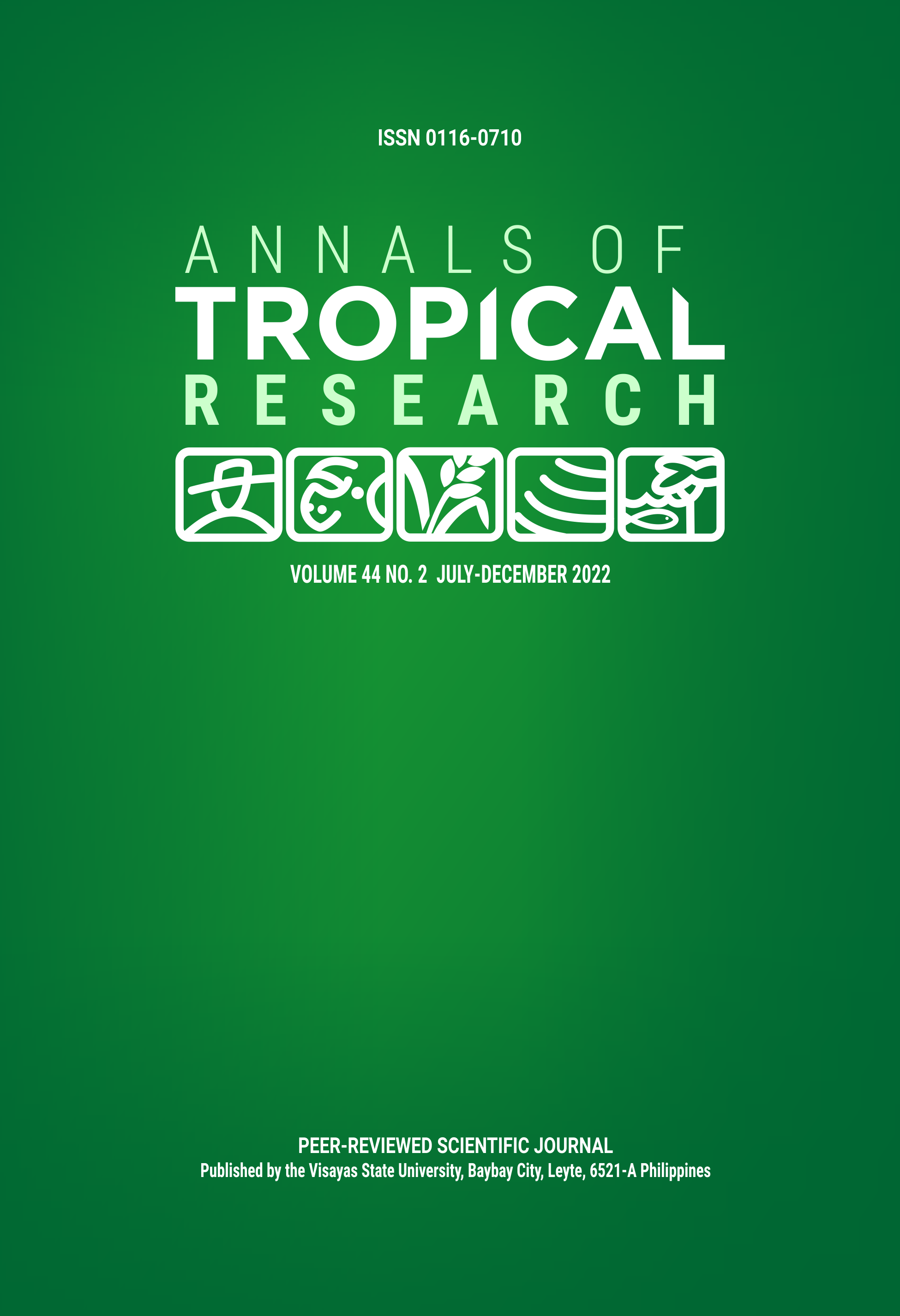Multivariate logistic regression analysis of risk factors for Salmonella spp. among ducks in selected barangays in Baybay City, Leyte
DOI:
https://doi.org/10.32945/atr4423.2022Keywords:
carriage rate, demographics, farm management, odds ratioAbstract
Salmonella contamination in poultry and poultry products is a threat to public health and food safety. This study aimed to assess the carriage rate and the associated risk factors of Salmonella spp. among ducks in selected villages in Baybay City, Leyte, Philippines. Salmonella was identified using conventional culture methods. On-farm survey interviews were carried out with 400 duck farmers to generate information on the risk factors associated with Salmonella spp. Univariate analysis was performed to screen potential risk factors and multivariate logistic regression analysis to identify significant risk factors. The overall carriage rate of Salmonella in ducks was 22.75% ± 4.11. Multivariate logistic regression analysis identified the incorporation of snails into the diet (OR=5.212; 95% CI:1.374 to 19.765) and sources of water from rivers (OR=2.823; 95% CI:1.273 to 6.264) and ponds (OR=6.413; 95% CI:2.827 to 14.550) as significantly associated with Salmonella spp. in ducks in the sampled farms. The use of antibiotics (OR=0.022; 95% CI:0.003 to 0.196) and flooding in the rearing area (OR=0.485; 95% CI:0.242 to 0.971) indicated lower chances of Salmonella infection. The data suggested that Salmonella spp. does infect ducks in the target population. It is recommended that randomized field testing be carried out to validate these findings.
Downloads
Submitted
Published
How to Cite
Issue
Section
License

This work is licensed under a Creative Commons Attribution-NonCommercial-ShareAlike 4.0 International License.











